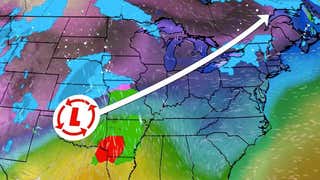

US
°C





In this Sept. 5, 2012 photo, a structure sits submerged in Lake Azuei seen near Jimani, Dominican Republic, near the border with Haiti. (AP Photo/Dieu Nalio Chery)
There seems to be no explanation for why a pair of lakes in Haiti and the Dominican Republic continue to rise.
Lake Azuéi in Haiti and Lake Enriquillo in the Dominican Republic have encroached on thousands of acres of land in recent years, according to National Geographic, swallowing up lands that are home to thousands. Generally, the impacts of climate change cause the seas to rise, but lakes are expected to shrink. As the years go on, that's not what residents and experts have seen in these two locations.
“At first we put rocks so it wouldn’t come into our houses,” Alberto Pierre, a Haitian who was pushed from his home by the rising Lake Azuéi, told National Geographic. “But then the water just overran the rocks.”
(MORE: Greenland's Ice is Melting Faster Because the Ice is Darker)
Experts have traveled from all over the world to study these two lakes, but they haven't been able to draw any conclusions about why the water is rising, the report added. While they work to figure it out, residents in the region flee to higher ground– some, permanently– to escape the higher waters.
Some believe it's being caused by pollution, though experts have yet to confirm it's the official cause of the lakes' rise. A 2011 story by Haiti Libre said the buildup of waste and sediment in the channels were keeping water from escaping the lake, and nearby deforestation also blocked those water outlets. That spells big trouble in the summer and fall, when large tropical systems dump huge amounts of rain and there's nowhere for that water to go.
"Because of the saturation of the soil and the deforestation already affecting the area, a natural phenomenon like a stationary storm or a hurricane could produce a tragedy of greater magnitude than the one in May 2004," Adela Matos, project manager for World Vision, told the Guardian. In that month, 500 people died and 1,600 were displaced in Jimaní, Dominican Republic, by heavy rains that flooded the nearby Blanco River, which flows between the two lakes.
The lakes' rise has had severe impacts on agriculture, as well as the local ecosystem. Farmland has disappeared by the thousands of acres, leaving already poor farmers with nothing, National Geographic also said. Birds are losing their habitat as trees get inundated and die off, while reptiles and other animals are migrating into areas where the citizens now live, the report added.
The two lakes are located due east of Port-au-Prince, in southern Haiti and southwestern Dominican Republic.
MORE ON WEATHER.COM: NASA Documents Change in Global Ice Cover
The Aprapaho Glacier in Colorado in 1898. (NASA)












